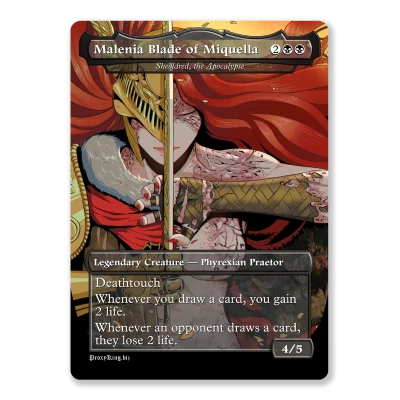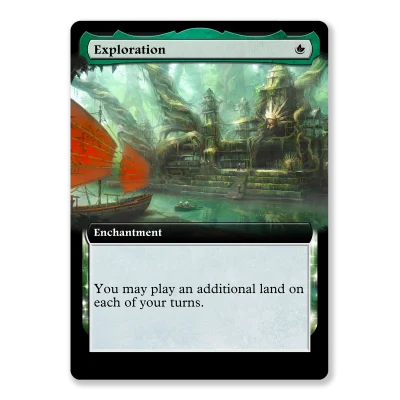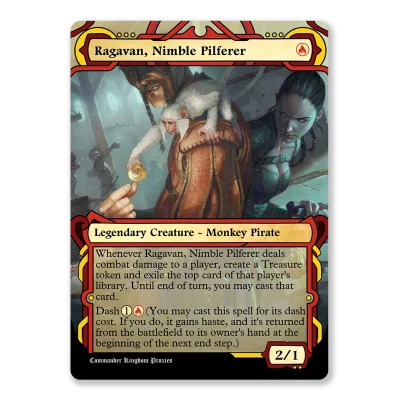Magic: The Gathering has a lot of powerful cards that cost one mana, but Esper Sentinel stands out in ways that catch people off guard. You spend one white mana, and you suddenly have a 1/1 artifact creature that threatens to shape the rest of the game. A 1/1 on the first turn might look harmless, yet there’s something special about this particular card. It doesn’t just show up to attack or block; it forces your opponents to make tough choices right from the start. And a tough choice for them is often great news for you.
Early-Game Presence That Matters
Plenty of one-drop creatures exist, but Esper Sentinel feels different. When you place this card on the battlefield, you’re not just creating a blocker or an attacker. You’re saying to your opponents, “Do you really want to cast that spell without paying extra?” It’s a small statement, but it can cause a big ripple effect. If they choose to pay the tax, it slows their development because they spend more mana than they’d like. If they don’t pay, you get a free card. Neither option is pleasant for them, and that’s the beauty of it.
I’ve seen games where an Esper Sentinel on turn one or two simply sits there, staring at opponents and making them wish they had a quick removal spell. Yet, even taking the time and resources to remove the Sentinel might feel inefficient because of its cheap cost. So either way, you’re dictating the pace of the match from a position that only cost you one mana. It’s rather satisfying to see an opponent struggle with what should be a straightforward spell-casting decision.
Card Advantage Through Taxation
White decks often struggle to draw enough cards, which can leave them at a disadvantage in longer games. That’s where Esper Sentinel’s ability starts to shine. Each time an opponent casts their first noncreature spell in a turn, they have to pay extra mana equal to the Sentinel’s power or let you draw a card. It’s basically a small tax that gradually adds up. Over several turns, this means you might draw a handful of cards you wouldn’t have had otherwise.
One or two extra cards might not sound game-breaking, but any avid Magic player knows that card advantage can swing the momentum of a match. If your deck leans on synergy or specific combos, each extra card draws you closer to your key pieces. If you’re running a more aggressive strategy, those extra cards might be additional threats or protective spells. Either way, the Sentinel often sets you up to keep pace with or even surpass your opponents in resources, which is something white decks really appreciate.
Maximizing the Tax with Power Boosts
Of course, if the Sentinel’s power remains at one, your opponent only has to pay one extra mana. That’s still annoying for them, but it’s usually not back-breaking. Where it gets interesting is when you find ways to increase its power. Heliod, Sun-Crowned is a popular way to do this, placing +1/+1 counters on the Sentinel after you gain life. If your Sentinel becomes a 3/3 or 4/4, opponents must pay a lot more. This can quickly turn that little one-mana creature into a serious financial drain on their mana each turn.
Some decks run equipment or enchantments that can also boost Esper Sentinel’s power. There’s a range of ways to do it, and the more you pile on, the harder it is for anyone else to keep you from drawing cards. At some point, it can feel cruel because opponents might give up on paying the tax entirely, handing you card after card. But you won’t hear me complaining. I’ll happily draw those cards.
Flexible in Different Deck Archetypes
One reason Esper Sentinel shows up so often is that it doesn’t lock you into a single strategy. Its artifact status means it can slot into decks that care about artifacts or decks that need cheap creatures. It helps control strategies by deterring your opponents from casting spells freely. It helps more aggressive strategies by forcing opponents to waste precious mana if they want to stay off your back.
You’ll also see Esper Sentinel in Commander games, where early plays that can draw cards over time tend to be treasured. In multiplayer formats, the Sentinel’s effect occurs multiple times in a turn cycle if each opponent decides to cast spells. That can snowball into a huge pile of cards. Sometimes you’ll hear a player say, “I’m not paying,” and then you watch them regret it as the next person says, “Well, I’m not paying either.” Before long, you’ve drawn enough to make everyone else wonder if they should have pitched in some mana.
Dealing With the Sentinel on the Other Side
It’s fun to have an Esper Sentinel proxy on your side of the battlefield, but not so fun when you’re the one being taxed. How do you deal with it? Some folks try to remove it as soon as they can. A well-timed Lightning Bolt, Swords to Plowshares, or other removal spell can get rid of it before it becomes a bigger threat. Others attempt to play around it by waiting until they have enough mana to pay the tax. However, waiting might throw off your tempo. And in formats like Commander, somebody else might respond by removing it for you, but you can’t always count on that.
Building Around the Card
If you’re thinking about building around Esper Sentinel, you’ll want to consider anything that can boost its power. Equipment pieces like Sword of Fire and Ice can make it hit harder and force opponents to pay more. If you’re looking at a life-gain angle, pairing it with Heliod is straightforward. You also want to ensure your deck can capitalize on the cards you’ll be drawing, so adding consistent ways to use your resources is key. Sometimes that might mean including more threats to keep the pressure on or additional interaction to handle whatever your opponents do next.
Why It’s So Popular
Popularity can come and go in Magic, but Esper Sentinel has stuck around. It isn’t the flashiest card. You won’t see it smashing through defenses for huge damage all by itself, though it can rack up a few points if left unchecked. Instead, it exerts a subtle form of control. It says, “If you want to keep playing spells at your normal pace, you’ll have to give me some cards.” And that’s a headache for people on the other side of the table.
You can’t ignore that you’re also paying only one mana for all this potential. That efficiency is hard to beat. It’s rare to see a white creature that can stay relevant for so long in a game without needing repeated investments.
Final Thoughts
Esper Sentinel might look innocent, but it has changed the rhythm of many matches. It’s a one-drop that commands respect, whether it’s in a casual kitchen-table game or a competitive tournament. I’ve heard some players groan when they see it, which is usually a sign that it’s doing its job. If you’re running white in any format, I think it’s worth testing. I’ve certainly enjoyed the results whenever I’ve included it in my deck. That single white mana often leads to a series of decisions and advantages that make opponents wish they had a simpler problem to solve.





